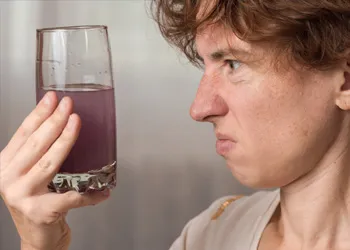Bernot, M.J., et al., Science of the Total Environment, 572:422-433, December 2016
We collaborated with 26 groups from universities across the United States to sample 42 sites for 33 trace organic compounds (TOCs) in water and sediments of lotic ecosystems. Our goals were 1) to further develop a national database of TOC abundance in United States lotic ecosystems that can be a foundation for future research and management, and 2) to identify factors related to compound abundance. Trace organic compounds were found in 93% of water samples and 56% of sediment samples. Dissolved concentrations were 10–1000 × higher relative to sediment concentrations. The ten most common compounds in water samples with detection frequency and maximum concentration were sucralose (87.5%, 12,000 ng/L), caffeine (77.5%, 420 ng/L), sulfamethoxazole (70%, 340 ng/L), cotinine (65%, 130 ng/L), venlafaxine (65%, 1800 ng/L), carbamazepine (62.5%, 320 ng/L), triclosan (55%, 6800 ng/L), azithromycin (15%, 970 ng/L), diphenylhydramine (40%, 350 ng/L), and desvenlafaxine (35%, 4600 ng/L). In sediment, the most common compounds were venlafaxine (32.5%, 19 ng/g), diphenhydramine (25%, 41 ng/g), azithromycin (15%, 11 ng/g), fluoxetine (12.5%, 29 ng/g) and sucralose (12.5%, 16 ng/g). Refractory compounds such as sucralose may be good indicators of TOC contamination in lotic ecosystems, as there was a correlation between dissolved sucralose concentrations and with the total number of compounds detected in water. Discharge and human demographic (population size) characteristics were not good predictors of compound abundance in water samples. This study further confirms the ubiquity of TOCs in lotic ecosystems. Although concentrations measured rarely approached acute aquatic-life criteria, the chronic effects, bioaccumulative potential, or potential mixture effects of multiple compounds are relatively unknown.
Source: Water Feed











I don’t think the title of your article matches the content lol. Just kidding, mainly because I had some doubts after reading the article.
Thanks for sharing. I read many of your blog posts, cool, your blog is very good. binance code
Your point of view caught my eye and was very interesting. Thanks. I have a question for you.
Can you be more specific about the content of your article? After reading it, I still have some doubts. Hope you can help me. https://www.binance.com/join?ref=P9L9FQKY
Hi, every time i used to check website posts here early in the dawn, as i love to find out more and more.